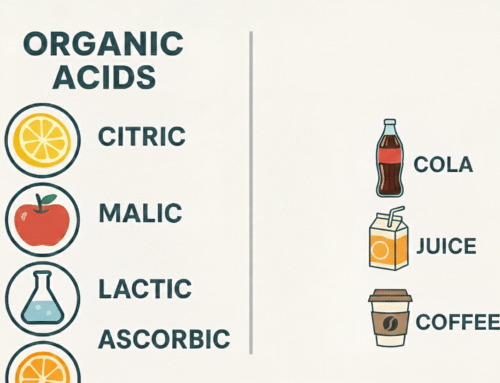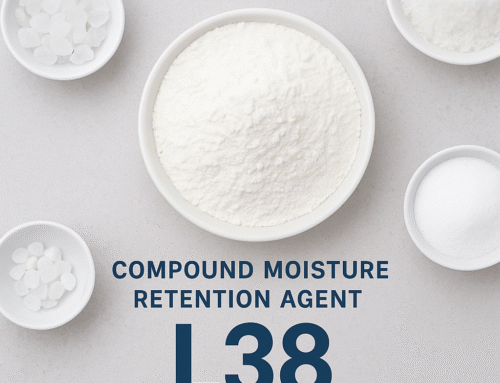Acetic acid and sodium acetate are two compounds that are closely related to each other. In this blog, we will explore their properties, functions, and applications, with a particular focus on their roles as food additives. Understanding the relationship between acetic acid and sodium acetate is essential for importers, distributors, and wholesalers of Acetic Acid and Sodium Acetate, as these compounds are often used in conjunction with each other in various industries.
We will continue in the order as follows:
- What are Their Properties and Specifications?
- What is the Relationship Between Acetic Acid and Sodium Acetate?
- What is the Difference Between Sodium Acetate and Acetic Acid?
- What Are Their Functions and Applications?
- Are they safe?
Now let’s start with the first question below.
What are Their Properties and Specifications?
To begin, let’s take a closer look at the specifications of acetic acid and sodium acetate. The following table provides an overview and a comparison of these two compounds:
| Specification | Acetic Acid | Sodium Acetate |
|---|---|---|
| Chemical Formula | CH3COOH | CH3COONa |
| Molar Mass | 60.05 g/mol | 82.03 g/mol |
| Physical State | Colorless liquid | White crystalline powder |
| Solubility | Soluble in water and most organic solvents | Soluble in water |
| Odor | Pungent vinegar-like odor | Odorless |
| HS Code | 29152100 | 29152910 |
| CAS No. | 64-19-7 | 127-09-3 |
| E-Code | E260 | E262 |
Although acetic acid and sodium acetate have distinct properties, they are interconnected due to the chemical relationship between the two. This leads to our next questions below.
What is the Relationship between Acetic Acid and Sodium Acetate?
Acetic acid and sodium acetate are chemically related compounds, with sodium acetate being the sodium salt of acetic acid. This relationship arises from a reaction between acetic acid and sodium hydroxide, where acetic acid acts as an acid and sodium hydroxide acts as a base.
When acetic acid reacts with sodium hydroxide, a neutralization reaction occurs, resulting in the formation of sodium acetate and water. The chemical equation for this reaction can be represented as follows:
CH3COOH + NaOH → CH3COONa + H2O
In this reaction, the hydrogen ion (H+) from acetic acid combines with the hydroxide ion (OH-) from sodium hydroxide to form water (H2O). The remaining components, the acetate ion (CH3COO-) from acetic acid and the sodium ion (Na+) from sodium hydroxide combine to form sodium acetate (CH3COONa).
As a result, acetic acid and sodium acetate are connected through this chemical reaction, with sodium acetate being derived from the neutralization of acetic acid. This relationship explains why sodium acetate is often referred to as the sodium salt of acetic acid.
What is the Difference Between Sodium Acetate and Acetic Acid?
While acetic acid and sodium acetate are related, there are notable differences between the two compounds:
Chemical Composition
Acetic acid: Acetic acid has the chemical formula CH3COOH. It is an organic acid composed of carbon, hydrogen, and oxygen atoms.
Sodium acetate: Sodium acetate has the chemical formula CH3COONa. It is the sodium salt of acetic acid and consists of sodium ions (Na+) and acetate ions (CH3COO-).
Physical State
Acetic acid: Acetic acid is a colorless liquid at room temperature. It has a distinctive pungent vinegar-like odor.
Sodium acetate: Sodium acetate typically exists as a white crystalline powder. It is odorless.
Solubility
Acetic acid: Acetic acid is soluble in water and most organic solvents. It readily dissolves in water, forming a solution.
Sodium acetate: Sodium acetate is also soluble in water. It easily dissolves, creating an aqueous solution.
Transport Regulations
Acetic acid: Acetic acid is classified as a hazardous material due to its corrosive nature. It is subject to transport regulations that require proper labeling, packaging, and documentation to ensure safe handling and transportation.
Sodium acetate: It is considered a general chemical because it‘s not corrosive. It could be transported as normal chemicals.
What Are Their Functions and Applications?
Acetic acid and sodium acetate serve various functions in the food industry as food additives. Let’s delve into their specific roles and applications, with a focus on their functions as food additives:
Sodium Acetate in the Food Industry
 pH Regulation: Sodium acetate is commonly used as a buffering agent in food products. It helps regulate and stabilize the pH levels, preventing excessive acidity or alkalinity. This is particularly important in processed foods and beverages where maintaining the desired pH is crucial for product quality and stability.
pH Regulation: Sodium acetate is commonly used as a buffering agent in food products. It helps regulate and stabilize the pH levels, preventing excessive acidity or alkalinity. This is particularly important in processed foods and beverages where maintaining the desired pH is crucial for product quality and stability.
Flavor Enhancer: Sodium acetate can enhance the flavor profile of food products, especially in savory and salty applications. It contributes to the overall taste by imparting a slightly tangy or vinegar-like note to the food. This flavor enhancement is often desired in snacks, sauces, dressings, and condiments.
Antimicrobial Properties: Sodium acetate has mild antimicrobial properties that can help inhibit the growth of certain bacteria and fungi in food. As a result, it can act as a natural preservative, extending the shelf life of products and enhancing their safety.
Texture Modifier: In certain food applications, sodium acetate can be used to modify the texture and mouthfeel. It can improve the firmness, smoothness, and stability of products, providing a desirable sensory experience to consumers.
Acetic Acid in the Food Industry
Food Preservation: Acetic acid is widely used as a natural food preservative due to its antimicrobial properties. It inhibits the growth of bacteria and molds, helping to prevent spoilage and extend the shelf life of various food products. Vinegar, which is primarily made from acetic acid, is used for pickling and preserving fruits, vegetables, and other perishable foods.
Flavoring Agent: Acetic acid contributes a distinctive sour and acidic taste to food products. It is utilized as a flavoring agent in a range of culinary preparations, including dressings, marinades, sauces, and condiments. Acetic acid adds a tangy and refreshing note, enhancing the overall flavor profile of these products.
Acidification: Acetic acid is employed for acidification purposes in certain food processes. It can be used to adjust the acidity levels in fermented foods, baked goods, and beverages. The controlled acidification helps in flavor development, pH regulation, and preservation.
Bakery Products: Acetic acid is utilized in the baking industry, particularly in the production of bread and other bakery goods. It contributes to the formation of carbon dioxide gas, which is essential for dough rising and creating a light, airy texture in the final baked products.
Are they safe?
Yes, both acetic acid and sodium acetate are considered safe for consumption when used in accordance with approved levels and regulatory guidelines.
Acetic acid and Sodium Acetate is generally recognized as safe (GRAS) by regulatory authorities such as the U.S. Food and Drug Administration (FDA) and the European Food Safety Authority (EFSA) when used in food applications within approved limits.
In conclusion, acetic acid and sodium acetate are closely related compounds with distinct properties and functions. Acetic acid serves as a preservative and flavoring agent, while sodium acetate acts as a buffering agent and flavor enhancer. Both acetic acid and sodium acetate have their respective applications and are considered safe when used in accordance with regulatory guidelines. Understanding the relationship between these compounds is essential for importers, distributors, and wholesalers in the food industry. If you need a professional consult, please feel free to contact [email protected].




